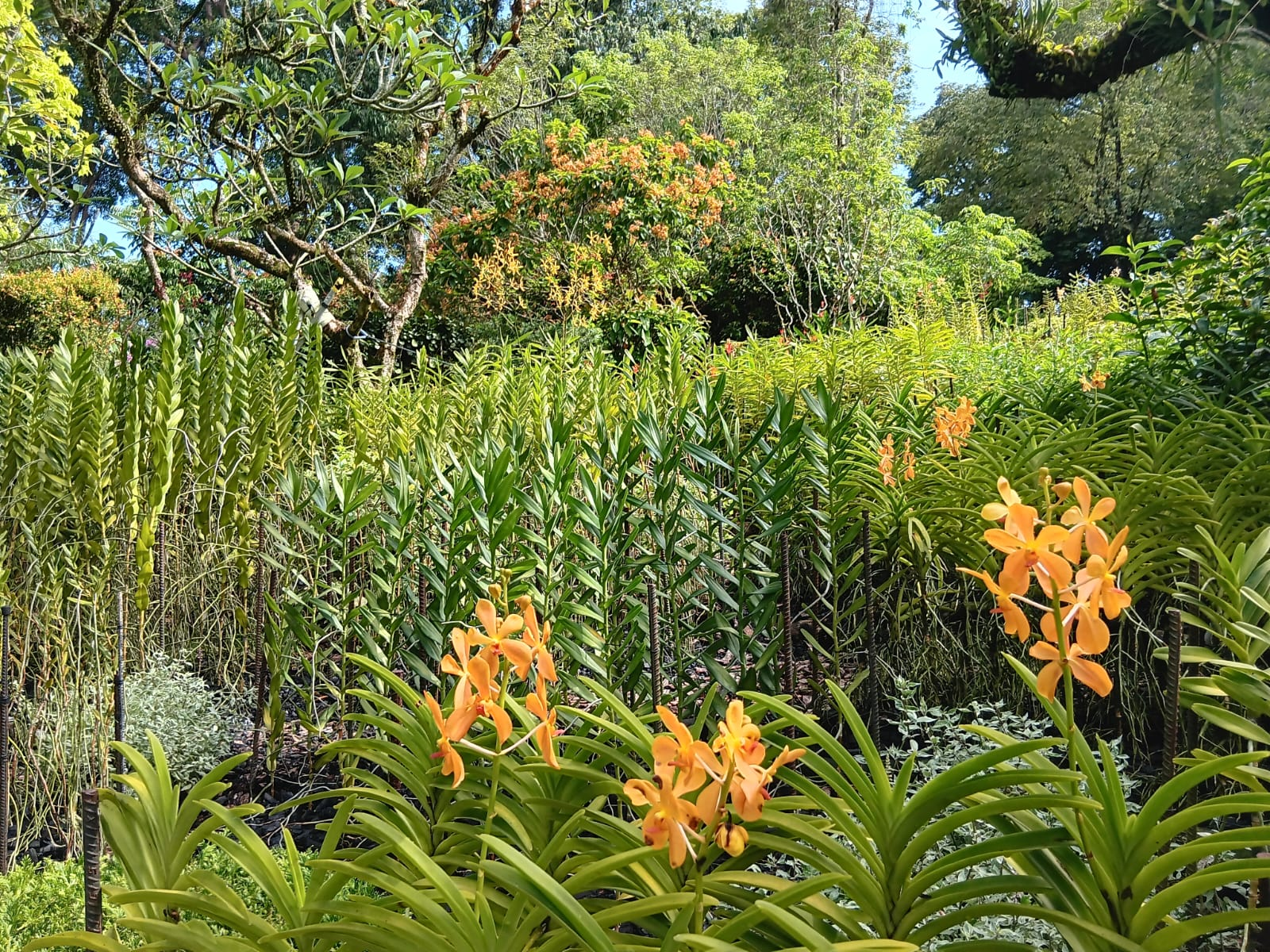Orchids Galore in Singapore
Walking in a North-Southerly direction from the Botanic Gardens Gate to the Tanglin Gate of the Singapore Botanic Gardens, one would arrive at a garden of orchids somewhere around the midpoint of the walk. It is a lovely place, this garden of orchids, and it offers the visitor a bounty of senses- sights and smells surrounding flowers from the family, Orchidaceae.
When visitors come to Singapore, be they family of friends, I love to offer them this place. So, when I Chun's cousin Lilian, came from Taiwan with her friend in November last year, I naturally brought them to the National Orchid Garden. When my Thai friends, Joy and Nat visited Singapore for a holiday barely a month later, NOG was part of the Botanic Gardens itinerary that I had curated for them. And I could tell that they all loved the place too!
Since I appeared to be acting as a tour guide to NOG quite often, I thought that it might be useful to learn more about orchids and their dedicated garden, so that I might become a better one! I therefore signed up for a NOG tour last Saturday, conducted by a volunteer guide called Siok Hua. There were ten of us who signed up for the English-speaking tour, and apparently all Singaporeans. She threw in a fine smattering of Singlish words in her narration, which was wonderfully humorous and irreverent, that kept us fully entertained throughout the one-hour duration of the tour.
Dancing lady
I learnt the orchid flower has three petals and three sepals. One of the petals is highly modified to form a lip (or scientifically called labellum) which acts to attract insects. In orchids from the genus oncidium, dancing lady or golden shower, this lip very much resembles the yellow skirt of a dancer, thus its name. It is obviously a popular flower in bouquets and flower arrangements, having been described `like hundreds of tiny butterflies flitting about on the stems'.
Terrestrial vs epiphytic
While terrestrial orchids grow on the ground with aerial roots spread on coconut husk material or charcoal bequeathed by the florist or gardener, epiphytic orchids grow in trees, supported by their roots. Their roots are white to green in colour. According to our guide the silvery white hue helps reflect tropical sunlight and heat.
Orchid diplomacy
One of the highlights of the tour must surely be our visit to Burkill Hall and the orchid garden in its compound, also known as the Celebrity Garden. Singapore is well known for its orchid diplomacy, where orchids are presented to dignitaries, statesmen, celebrities and other famous people, as a mark of honour, respect and recognition. These orchids require cultivation periods of about two years (and up to 10 years?) to create new cultivars, and which are named after the foreign dignitary.
Our guide spoke at length about flower colour offered to these dignitaries, in particular, the royal yellow of the emperor is seen as befitting statesmen. Thus, these were the colour of the orchids presented and named after Nelson Mandela and Lee Kuan Yew. While Princess Diana had never visited Singapore, she has an orchid here named after her as well. The cultivar was chosen by her son, Prince William and his Princess Catherine. They must have been really touched to see the orchid bearing Diana's name.
There is a cultivar named papilionanda Tan Hoon Siang, himself a prominent rubber magnate and orchid cultivator, who named his award-winning creation after his father. It is said that Tan Hoon Siang's expertise in horticulture, and in particular, orchid-growing may have saved his life during the Japanese Occupation. Read the story here: Tan Hoon Siang, 1909-1991. (SJC: 1928-32) | St John's College, Oxford
Edible orchids
Along the route of the tour, we were invited to stop and smell some a particular orchid, a Vanda hybrid called Papilionanda Mimi Palmer. It owns a lovely fragrance, sweet and chocolate-like. While certain orchids are edible, our guide reminded us that they have to be prepared in a certain way to ensure consumer safety and actually be fit for consumption. Another species of orchid that is known universally for its flavour is none other than the vanilla, which is actually rather difficult to grow.
On an island at a central junction of the Orchid Gardens, our guide pointed out an orchid bush, sans flower. It was the tiger orchid, which is the largest orchid species in the world. According to Papa, Uncle Lim used to grow a lot of tiger orchids in his compound at the MARDI quarters. These lovely yellow, brown-speckled flowers have an unpredictable blooming pattern. They sometimes flower only once in a few years, and my current visit to the orchid gardens was apparently during one of the years in between.
Photo from Straits Times, ST File, published on 31 JAN 2022Soon our group arrived at the SembCorp Cool House, where our bubbly guide would leave us to continue our exploration, and enjoyment, of the National Orchid Gardens. Before parting though, she left each of us with her own hand-made memento- bookmarks of orchid paintings by Charles de Alwis, carved out from the calendar sent by SBG to their volunteers annually, and nicely laminated!
SembCorp Cool House
27th August 2023








Comments
Post a Comment